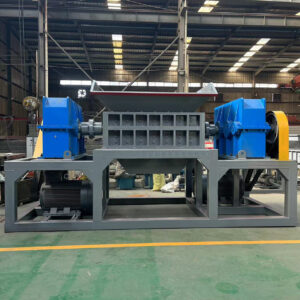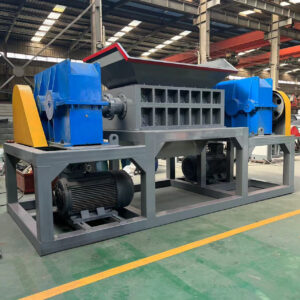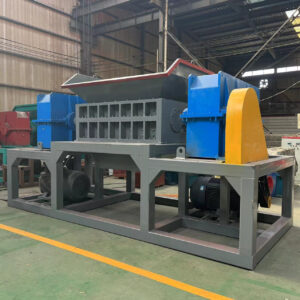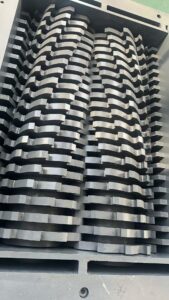In today’s industrial landscape, waste management and recycling are more important than ever. Whether you are running a recycling plant, manufacturing facility, or processing center, one machine that plays a pivotal role in material handling is the shredder machine. Designed to reduce the size of various materials, shredder machines help in minimizing waste, preparing materials for further processing, and optimizing storage and transport. This comprehensive guide will walk you through what a shredder machine is, the types available, applications, benefits, and how to choose the right shredder for your business needs.
What is a Shredder Machine?

A shredder machine is an industrial device used to cut, tear, or crush materials into smaller pieces. It typically consists of a motor, cutting blades or rollers, a feed mechanism, and a discharge system. Shredders are commonly used in the recycling industry to process waste materials such as plastic, metal, wood, and paper.
Shredding is a critical first step in the recycling process. It enables efficient material handling, improves safety, reduces waste volume, and increases the effectiveness of downstream processing equipment like granulators and balers.
Types of Shredder Machines
There are several types of shredder machines, each suited for different applications and material types:
1. Single Shaft Shredder
- Ideal for plastic lumps, pipes, wood, and soft metals
- Features one shaft with rotary blades
- Produces uniform particle sizes
2. Double Shaft Shredder
- Best for bulky and tough materials like tires, metal drums, and e-waste
- Uses two counter-rotating shafts
- Can handle high volumes and large items
3. Four Shaft Shredder
- Delivers fine shredding in a two-step process
- Suitable for confidential document destruction, medical waste, and electronic components
- Offers precise control over output size
4. Hammer Mill Shredder
- Crushes and pulverizes materials using swinging hammers
- Often used in metal recycling and demolition applications
5. Granulators
- Though technically different, granulators are sometimes used in tandem with shredders
- Designed for smaller particle size reduction
Common Applications of Shredder Machines

Shredder machines are incredibly versatile. Here are some of the most common applications across various industries:
- Plastic Recycling: Shredders break down plastic bottles, containers, and packaging materials into flakes for further processing.
- Metal Scrap Processing: Industrial shredders cut down aluminum, steel, and copper waste into manageable sizes.
- E-waste Disposal: Used for shredding hard drives, circuit boards, and other electronic components.
- Tire Recycling: Shreds used tires into chips for use in road construction or fuel.
- Wood Waste Reduction: Useful in furniture manufacturing and sawmills for reducing wood offcuts.
- Paper and Cardboard: Shredding old documents and cardboard packaging for recycling or disposal.
Benefits of Using a Shredder Machine

The benefits of implementing a shredder machine into your operation are numerous:
- Waste Volume Reduction: Minimizes space required for waste storage and lowers transport costs.
- Material Reusability: Allows materials to be reprocessed into new products.
- Operational Efficiency: Speeds up waste handling and disposal processes.
- Security: Particularly important for destroying confidential or sensitive documents.
- Environmental Compliance: Helps meet regulatory requirements for waste processing.
How to Choose the Right
Shredder Machine
Selecting the right shredder for your business depends on several factors:

1. Material Type
Different materials require different shredding mechanisms. For example, metals need stronger blades and torque, while paper can be processed by lighter-duty machines.
2. Desired Output Size
Some applications require finely shredded material, while others only need coarse cuts. Choose a shredder that can adjust or deliver the particle size you need.
3. Capacity and Throughput
Understand how much material you need to process per hour or day. High-volume operations need more robust machines.
4. Maintenance Requirements
Consider ease of cleaning, blade replacement, and overall durability. A machine with low maintenance needs can save costs in the long run.
5. Budget
While it might be tempting to choose the cheapest option, investing in a high-quality shredder often leads to better performance, longevity, and return on investment.
6. Safety Features
Look for emergency stop buttons, safety covers, and automatic reverse functions to prevent jamming or injury.
Final Thoughts
A shredder machine is a crucial investment for businesses looking to streamline their waste management and recycling processes. With various types and models available, understanding your specific needs is key to selecting the right equipment. From plastic and metal to wood and paper, the right shredder can dramatically enhance your efficiency, reduce costs, and promote sustainability.
If you’re unsure which shredder is best for your operation, consult with a professional supplier who can offer tailored advice based on your material type, volume, and processing goals.
Ready to boost your productivity and cut down your waste? A reliable shredder machine might be your next best investment.
